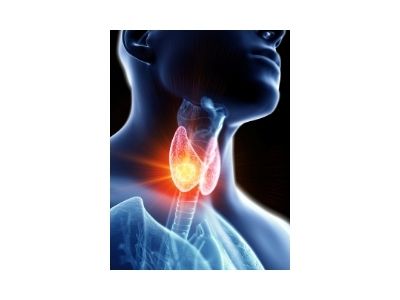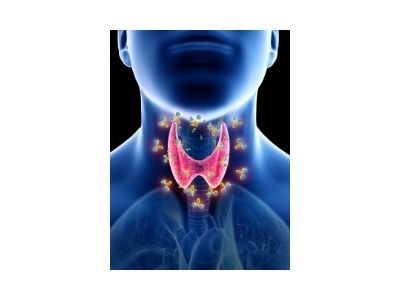Goiter – Causes, Symptoms, Treatment, Ayurveda Understanding
By Dr Raghuram Y.S. MD (Ay) & Dr Manasa, B.A.M.S
Thyroid gland is a butterfly shaped gland. It is located at the base of your neck, below the Adam’s apple. An abnormal enlargement of your thyroid gland is called as goiter. They are generally painless. A large goiter may cause cough, difficulty in swallowing and breathing.
Lack of iodine in the diet is the most common cause of goiters. It may also be caused due to over or under production of thyroid hormones or due to the presence of the nodules in the gland. Treatment of goiter depends on many things – like size of the goiter, its causes and symptoms. Treatment is usually not required for small goiters that are not seen and do not cause any problems.
Read – Home Remedy For Goiter Using Kanchanar

Table of Contents
Diet
Consume iodine rich foods including iodized salt, seafood or seaweed, shrimp or shellfish. In coastal regions locally grown fruits and vegetables are likely to contain some iodine so also cow’s milk and yoghurt. Daily dosage of 150 mg iodine is ideal. This quantity is available in less than half teaspoon of iodized salt. Adequate amount of iodine are very important for pregnant and lactating women and for infants and children.
Avoid excessive consumption of iodine – Avoid iodine fortified salt, shellfish, seaweed and iodine supplements.
Foods which can replenish iodine and selenium levels in the body and cause production of healthy amounts of thyroid hormones are essential for patients of goiter. They contain anti-inflammatory compounds and antioxidants. They reduce swelling and other symptoms of goiter.
Iodine rich diet –
- Iodized salt
- Seafood
- Cod fish
- Eggs
- Milk
- Natural yoghurt
- Baked potato with skin
- Navy beans
- Tuna
- Cranberries
- Lettuce
Adults should consume about 150 micrograms of iodine every day for goiter prevention.
Selenium rich foods
- Brazil nuts
- Onions
- Barley
- Eggs
- Meat
- Poultry
- Shellfish
- Fatty fish
- Sunflower oil
- Wheat germ
- Mushroom
- Kidney
Other inclusions –
- Banana
- Pineapple
Foods to avoid
Foods that hinder normal functioning of thyroid gland are called as goitrogenic foods. Due to consumption of these foods, the gland will be unable to synthesize iodine properly. The below mentioned foods should be eaten in moderation –
- Cauliflower
- Cabbage
- Spinach
- Broccoli
- Mustard greens
- Peanuts
- Radish
- Soy beans
- Sweet potatoes
- Strawberries
- Kale
- Turnip
- Brussels sprouts
When these foods are cooked and consumed their impact on thyroid gland will not be bad.
Home Remedies
Withania somnifera – Ashwagandha
- Decoction – 2 tablespoon bark powder of Ashwagandha should be boiled in about 150 ml of water, reduced to half of its volume and strained. This should be divided into 2 portions. One portion of concoction should be consumed before breakfast and the second portion in the evening.
- Milk recipe – 1 tablespoon of Ashwagandha powder should be boiled with 75 ml of milk and 300 ml of water. When only milk i.e. 75 ml milk remains after all water has been evaporated it should be strained and consumed warm.
- Powder – Smooth powder of Ashwagandha may be taken mixed with milk. (Read more)
Ashwagandha boosts the thyroid gland functioning and increases the production of thyroid hormones. Cortisol whose levels increase due to chronic stress impairs proper functioning of thyroid hormones. Ashwagandha powder fights this stress and hence controls thyroid functions and hormones.
Turmeric
Add ½ cup of turmeric powder to 1 cup of hot water on the pan. Cook this until it becomes a thick paste. To this add 1 and half teaspoons of black pepper powder and about 70 ml of coconut oil or cold pressed olive oil. Stir the ingredients well. Remove the contents from the flame and store it in an air tight container. This paste should be taken in dose of 1 teaspoon, once or twice daily. Studies have shown that turmeric could be useful in goiter treatment. (Read more)
Garlic
Chew 3-4 garlic cloves in the morning. Alternatively the crushed cloves of garlic mixed in honey should be consumed. Garlic stimulates production of glutathione as it contains selenium. Selenium is needed for healthy functioning of thyroid gland. (Read more here)
Coconut Oil
Coconut oil has high levels of lauric acid which is converted into monolaurin. This has antimicrobial and anti-inflammatory properties. It also improves metabolism.
Read – Coconut Oil- Bad Or Good, Benefits, Ayurvedic And Contemporary Views
Lemon Juice
Crush 1 clove of garlic and mix it with 1 tablespoon of lemon juice and 1 tablespoon of honey. This should be consumed every morning. Both lemon and garlic contain anti-inflammatory compounds. This recipe will remove toxins accumulated in the body owing to their antimicrobial and anti-inflammatory properties. (Read research studies lemon and garlic – A, B)
Pineapple Juice
Blend 4-5 pieces of pineapple, 1 medium sized carrot and 2 tomatoes together and get their juice. Drink this juice. This may improve the hormonal status and also reduce the size of the goiter. (C)
Moringa oleifera
Steep 1 tablespoon of dried moringa leaves in a cup of hot water for few minutes, strain and drink its decoction. These leaves of Moringa may help in regulating the production of thyroid hormones. (D)
Nuts
Munch handful of nuts soaked in water overnight. Nuts are rich in omega-3 and omega-6 fatty acids. They are also anti-inflammatory in nature. Brazil nuts are rich in selenium. Selenium is a stimulating factor in conversion of T4 hormone to T3 hormone.(E)
Fish Oil
One teaspoon of fish oil should be consumed every day. Fish oil supplement can be consumed in the form of capsule form or in liquid form. Fish oil is rich in omega-3 fatty acids. This helps to metabolize thyroid hormone in liver.
Apple Cider Vinegar
Mix 1 teaspoon of apple cider vinegar and half teaspoon of honey in a glass of warm water and drink the mixture. ACV is mildly acidic and restores pH balance in the body. It detoxifies the body. This helps to increase absorption of iodine and reduce thyroid swelling. (F)
External measures
Neck Exercises
Stretching exercises for neck are known to help in the treatment of goitre. They stretch the muscles connected to the thyroid gland. They also reduce thyroid swelling.
Upward neck stretch – Lift your chin towards the ceiling sitting on a chair. Stay in that position for few seconds by stretching the neck as much as possible. Repeat this 10-12 times.
Sideways Neck Stretch – bend your neck to your side slowly so that your ear touches your shoulder. Stretch as much as possible and repeat the same posture on the opposite side. Do it 10 times on each side.
Castor Oil
With a few drops of castor oil massage the neck gently, over the thyroid region and leave it overnight. This shall be practiced every night. It is anti-inflammatory and reduces swelling of thyroid gland. It causes detoxification of liver and helps conversion of T4 to T3.
Flax Seeds
Make paste of 2-3 tablespoon of flaxseeds, with a little bit of water. Apply this paste on your neck – thyroid swelling and leave it for 20-25 minutes. Later wash and pat that area dry.
Studies show that alpha-linolenic acid in these seeds form resolvins which have anti-inflammatory properties.
Other useful things in Goiter
- Lemon balm tea
- Motherwart
- Dandelion leaves
- Seaweed
- Bentonite clay
Symptoms of Goiter
We don’t find signs and symptoms in all goiters. But when they occur, below mentioned are the signs and symptoms of goiter –
- A swelling at the base of your neck
- Tight feeling in throat
- Hoarseness of voice
- Difficulty in swallowing
- Coughing
- Difficulty in breathing
- Mood swings
- Unexplained weight gain or loss
- Puffiness of the face
Causes of Goiter
The thyroid gland produces two hormones i.e. T4 called as thyroxine and T3 called as triiodothyronine. These hormones circulate in the blood and are very essential to
- regulate the metabolism
- maintain the rate of utilization of fats and carbohydrates in the body
- control body temperature
- influence heart rate
- regulate production of proteins
Thyroid gland also produces another hormone called calcitonin. This hormone regulates calcium levels in the blood.
The rates at which T4 and T3 are produced and released by the thyroid gland are controlled by your pituitary gland and hypothalamus. Hypothalamus signals the pituitary gland to make a hormone called TSH – Thyroid Stimulating Hormone. Depending on the quantity of T4 and T3 in the blood, the pituitary gland releases a certain amount of TSH. Thyroid gland in turn regulates its production of hormones based on amount of TSH it receives from the pituitary.
The thyroid gland may still produce normal amounts of hormones when it is enlarged. It may also produce too much or too little hormones. Having a goiter doesn’t mean that the thyroid gland isn’t working normally.
Read – How Endocrine System And Hormones Are Governed By Tridosha?
The most common causes for enlargement of thyroid gland are –
Iodine deficiency – Iodine is very much essential for the production of thyroid hormones. Iodine deficiency will cause goiters when the gland enlarges in an effort to obtain more iodine. Deficiency of iodine may become worse by a diet high in foods like cabbage, broccoli and cauliflower which tend to inhibit the hormones. Lack of dietary iodine is not usually a cause of goiters in countries where iodine is routinely added to the table salt and other foods.
Graves’ disease – Sometimes when the thyroid gland produces too much thyroid hormone as in hyperthyroidism, goiter may occur. In Graves’ disease, the antibodies mistakenly attack the thyroid gland and make it to produce excessive thyroxine. This overstimulation causes swelling of thyroid gland.
Hashimoto’s disease – An underactive thyroid (hypothyroidism) can also cause goiter. Hashimoto’s disease is also an autoimmune disorder just like Grave’s disease. But in contrary to Grave’s disease, this condition causes damage of the thyroid gland and makes it to produce too little hormones. The pituitary gland on sensing low thyroid hormone level in the blood produces more TSH to stimulate the thyroid. This causes the gland to enlarge.
Multinodular Goiter – Here many solid or fluid filled lumps called as nodules develop on both sides of the thyroid. This results in overall enlargement of the gland.
Solitary thyroid nodule – Here a single nodule develops in one part of thyroid gland.
Thyroid cancer – It is less common than benign thyroid nodules.
Pregnancy – HCG i.e. human chorionic gonadotropin, a hormone produced during pregnancy may cause enlargement of thyroid gland.
Inflammation – In thyroiditis there is pain and swelling of thyroid gland. It may also cause production of too much or too less thyroxine.
Read – Control Anger, Get Rid Of Inflammation And Arthritis

Risk Factors
Lack of dietary iodine – People living in places where iodine supply is less and those who do not have access to iodine supplements are at higher risk of developing goiters.
Being Female – Women are more prone to thyroid disorders. Therefore they are also more likely to develop goiters.
Age – Goiters are more common after 40 years of age.
Medical history – One is at the risk of developing a goiter if he or she has a personal or family history of autoimmune disease.
Pregnancy and menopause – Thyroid problems are likely to occur during pregnancy and menopause.
Medications – Certain medicines like amiodarone and lithium increase the risk for goiter.
Radiation exposure – Radiation treatments to the neck or chest area increases the risk of goiter. The same is true when one is exposed to the radiation in a nuclear facility, test or accident.
Complications
Large goiters can cause difficulty in breathing or swallowing. They can also cause cough and hoarseness of voice. Many symptoms including fatigue and weight gain, weight loss, irritability and sleeplessness may be associated in goiters resulting from other conditions like hypothyroidism or hyperthyroidism.
Diagnosis
Goiter may be diagnosed during the examination of the patient. The doctor may discover enlarged thyroid gland by feeling the neck and making the patient to swallow something. He may also be able to feel the nodules in the patient’s neck. Below mentioned diagnostic measures may be sought for to make a precise diagnosis.
Hormone test – Blood tests help in determining the quantity of hormones produced by thyroid and pituitary glands. In case of underactive thyroid, the thyroid hormone level will be low while the level of TSH will be elevated. In a goiter associated with an overactive thyroid high level of thyroid hormone will be found in the blood along with lower than normal TSH level.
Antibody test – In some cases of goiter there is production of abnormal antibodies which will be confirmed by a blood test.
Ultrasonography – helps in forming the images to reveal the size of the thyroid gland and also to determine if the gland contains nodules which might have been missed during physical examination.
Thyroid Scan – also helps in producing an image of thyroid gland on the computer screen. It provides information about the nature and size of the thyroid gland.
Biopsy – here a tissue or fluid sample is used for testing.
Read – Laryngitis (Swelling of voice box) – Causes, Ayurvedic Treatment

Treatment
The treatment of goiter depends on its size, signs and symptoms and also the underlying cause. The below mentioned strategies may be adopted –
Observation – The doctor may look out for wait-and-see approach and keep you on observation if you have a small goiter which is not causing any problems and when your thyroid gland is normally functioning.
Medication – Thyroid replacement with levothyroxine is done in hypothyroidism. This will resolve the hypothyroidism symptoms and slow the release of TSH. This will decrease the size of goiter. Aspirin or corticosteroid may be suggested to treat the inflammation of thyroid gland. Medications to normalize hormone levels will be needed if the goiter is associated with hyperthyroidism.
Surgery – Removing the entire thyroid gland i.e. total thyroidectomy or part of the gland i.e. partial thyroidectomy is preferred if the thyroid gland is large or if you have a nodular goiter causing hyperthyroidism. Surgery is also the best option for thyroid cancer.
Radioactive Iodine – It is used to treat an overactive thyroid gland in some cases. It destroys the abnormal thyroid cells resulting in diminished size of the goiter. This may also cause an underactive thyroid gland.
Best Yoga Postures
- Sarvangasana – shoulder stand
- Viparita Karani – inverted pose
- Sethubandhasana – bridge pose
- Ushtrasana – camel pose
- Matsyasana – fish pose
- Halasana – plough pose
- Bhujangasana – cobra pose
- Dhanurasana – bow pose
- Urdhwa Dhanurasana – upward bow pose
- Shirshasana – supported headstand pose
- Navasana – boat pose
Click to Consult Dr Raghuram Y.S. MD (Ayu) – Skype









